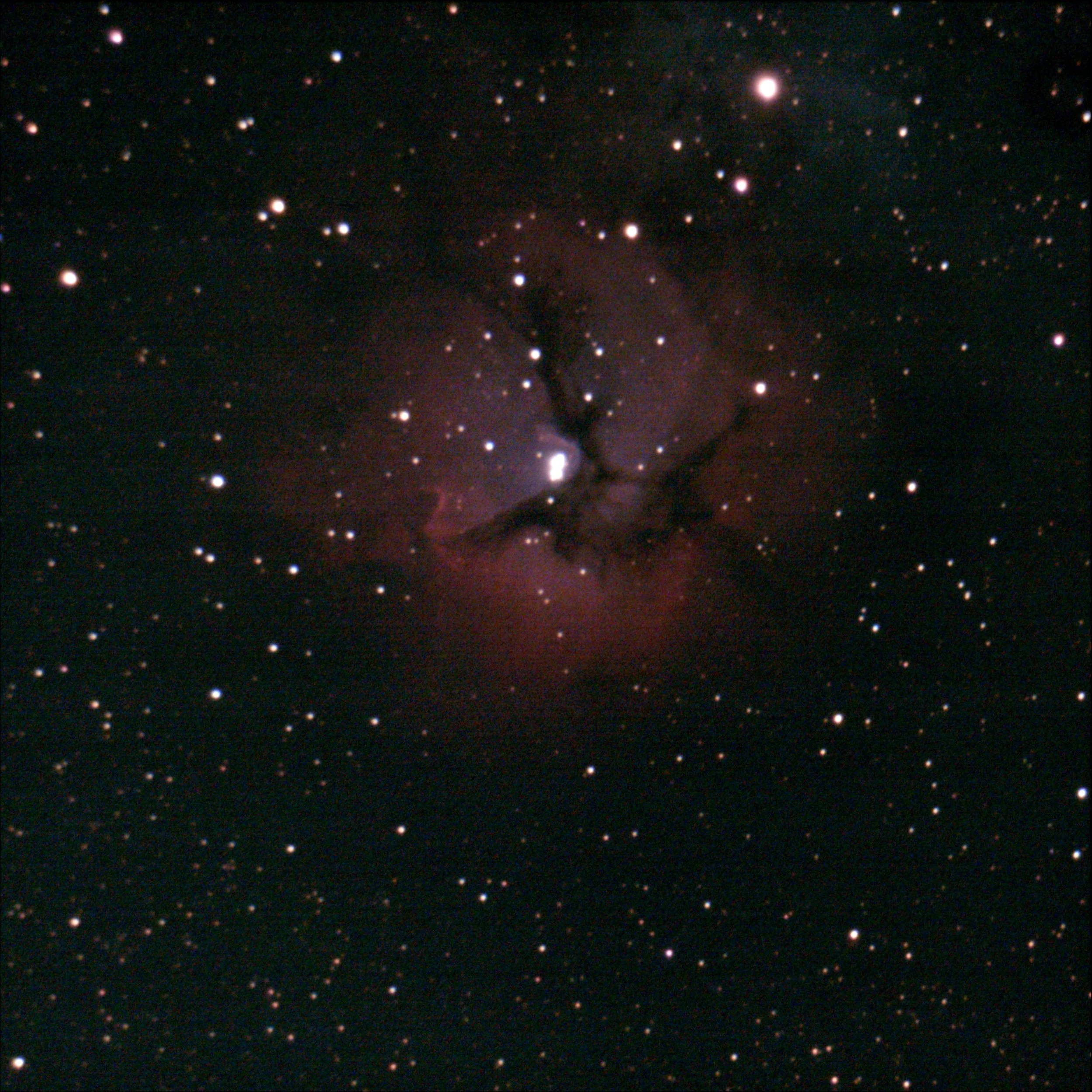Marist’s New Astronomy Club Creates a Space for Stargazers
Marist Physics Professor Dr. Nelson Sivers and student Logan Adelson '26 use the University's astronomy equipment to view celestial objects near the Green. Photo Provided by Dr. Nelson Sivers.
Last year, the incredibly rare total solar eclipse formed crowds of students on the campus green to witness the momentary dimming of our sun. Months later, the aurora borealis brought students out of their dorms and classes to view bright streaking colors across the night sky.
These phenomena, which both garnered large numbers of students and faculty, particularly enthused Nick Webster ‘27, who enjoyed seeing Marist students come together to revel in an astronomical event.
Webster, an environmental science major, has been captivated by space from a young age. He jumped at the chance to create the Astronomy Club when offered the opportunity by Marist physics professor Dr. Nelson Sivers. Currently in the process of writing their bylaws, the club hopes to launch this fall.
“I had wanted to start a club and we already had equipment, so I thought that if we already had made some progress why wouldn’t I be able to make the Astronomy Club a reality,” Webster said. “I also want to create an opportunity for students, who usually stay up late doing assignments, to take a break and gaze up at the sky.”
Astronomy, though not currently a major at Marist, is taught through classes like Dr. Sivers’ Introduction to Cosmology. For students who are curious to further explore the stars and planets, the Astronomy Club hopes to provide the equipment and knowledge to help them expand their learning.
It was while using the university’s equipment for the first time during Dr. Sivers’ astronomical viewings that Webster’s childhood passion was reignited. “That spark then became a wildfire of a journey that has led me to founding an Astronomy Club on campus, so that maybe I might be able to ignite the flame for others to experience the same awe and wonder that I now have because of astronomy,” Webster said.
An image taken of the Trifid Nebula (M20) using Marist astronomy equipment. Photo by Logan Adelson '26.
Webster is not pursuing this club alone– along with help from Dr. Sivers, Bella Cipolla ‘26 intends to be vice president of the Astronomy Club this upcoming fall semester. Also stemming from a childhood interest, astronomy reminds Cipolla that there are matters bigger than us and that extraordinary entities exist beyond our world. For her, the club is an opportunity to share this interest with like-minded individuals, which she’s excited to begin.
“I would like to do more fundraising for the club as it would allow us to purchase better equipment, and enhance observation,” Cipolla said.
The local Mid-Hudson Astronomical Association (MHAA), which hosts events such as outdoor observing sessions, guest speakers and presentations, is interested in a future collaboration with the club. The club hopes to hold MHAA trips along with regular on-campus movies, stargazing, interactive events and astronomy equipment tutorials at their meetings.
“I hope to introduce others to the stunning astronomical wonders that we can see from our tiny blue speck of a planet that we call home,” said Webster. “I hope to bring others attention to what space is and what it means to be a part of the only planet that currently has intelligent life.”
The club, currently preparing to propose its concept to the SGA board, is focused on gaining student interest to help propel it into creation. All students, faculty and staff are welcome to fill out the interest form, no matter their level of astronomy knowledge. For Webster and Cipolla, the Marist Astronomy Club is intended to be a welcome space where all Marist individuals can share in the learning of our universe.
Scan the QR code to access the Astronomy Club's interest form. The club is looking for names of those interested in joining to present to SGA. QR Code Provided by Nick Webster '27.


